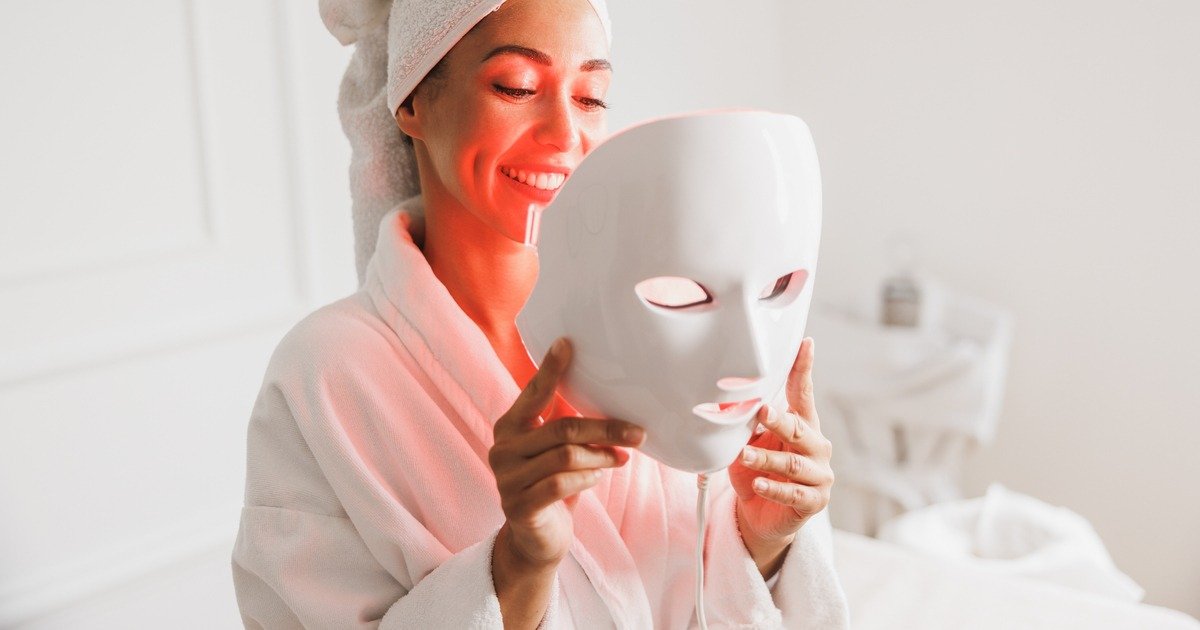If you’ve spent even five minutes scrolling through your social feed lately, chances are you’ve seen someone lying under a glowing red panel looking like they’re about to be beamed up by aliens. Red light skin therapy is everywhere right now. Celebs are obsessed. Spas are selling sessions like hotcakes. Some people even have red light masks just chilling at home next to their jade rollers.
But does it actually do anything? Or is this just another wellness fad riding a wave of filters and influencers?
Here’s the thing: surprisingly, the science actually backs a lot of it up. How could sitting under a red light for 10 minutes make any real difference to your skin or health? But dermatologists, estheticians, and researchers have been quietly gathering data, and it turns out… red light therapy might be more legit than most of us thought.
Contents
What Even Is Red Light Therapy?
So before we dive into the benefits, let’s cover the basics. Red light therapy (also called low-level laser therapy or photobiomodulation) uses—you guessed it—red wavelengths of light to penetrate the skin. Not UV rays, not heat lamps, just visible red light (and sometimes near-infrared) that goes deep enough to reach the cells beneath your skin’s surface.
And when those cells absorb the light? They basically get a little energy boost. Think of it like charging your phone, but instead, you’re recharging your skin cells. The light helps stimulate ATP production (cell energy), which supports repair, regeneration, and overall skin function.
Sounds weirdly sci-fi, but it’s actually a pretty natural process.
Benefits of Red Light Skin Therapy
Here’s where it gets interesting—and dermatologist-approved. Red light therapy isn’t some overnight miracle, but used consistently? It can seriously change the game for your skin and beyond.
1. Collagen Production
Probably the biggest draw for most people is that red light therapy can help stimulate collagen. And if you’re over 25, you know collagen doesn’t just appear anymore. It starts slowing down, and things get a little… less firm.
Red light penetrates deep into the dermis and basically signals your fibroblast cells to start making more collagen and elastin. That means smoother, plumper skin over time. Not Botox-level overnight results, but it’s natural and subtle—and let’s be honest, subtle often looks better.
2. Soothing Inflammation
Got sensitive skin? Dealing with rosacea, redness, or post-acne irritation? Red light might be your new best friend. It helps reduce inflammation by calming the skin and encouraging healing at a cellular level.
A lot of dermatologists recommend it to people dealing with eczema, psoriasis, and even post-procedure recovery. It’s like a chill pill for your skin, without slathering on five products and praying none of them cause a reaction.
3. Acne Support
No, it’s not a miracle acne cure, but red light has shown real promise for helping calm breakouts. It doesn’t kill bacteria (that’s what blue light’s for), but it helps reduce the inflammation and redness that makes acne feel so… obvious.
Plus, it promotes healing, so those stubborn spots might fade faster than they would on their own.
But Here’s the Catch…
Like most good things in life, red light therapy works over time. One 15-minute session isn’t going to make you look 10 years younger by the next morning. It’s all about consistency.
You’ve got to commit—whether that’s a few times a week at your local spa or tanning services salon, or investing in an at-home device and sticking to it like your skincare routine depends on it.
So… Is It Worth It?
If you’re looking for a non-invasive, no-downtime way to improve your skin’s texture, tone, and resilience, red light therapy has earned its place in the spotlight. It won’t replace your SPF or your retinol, but it can absolutely support everything else you’re already doing.
And hey, there’s something kind of soothing about lying back in a warm red glow after a long day. Like a little meditative moment that also happens to make your skin look great.
If you’re curious, give it a shot. Just make sure the device is legit (wavelengths between 630–850nm are the sweet spot), and don’t expect miracles overnight. Real skin wins take time — but they’re worth it.
